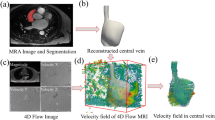Abstract
Perforation of the vena cava or atrium is a serious complication of monitoring with a central venous catheter. We designed an in vitro model with a pulsating simulated membrane to evaluate a number of variables that could affect relative perforating potential of different types of central venous catheters. To determine the perforating potential of central venous catheters, we studied the effects of (1) the angle of incidence (n=6) between catheter and simulated membrane; (2) catheter material (polyurethane and polyethylene); (3) make (manufacturer and model) (n=6), with 3 catheters of each make tested; (4) design (n=3 each: silicone rubber, open-ended, blunt-ended, and polyurethane pigtail); and (5) number of lumens (single, double, or triple). Each trial was repeated five times with each catheter that was tested. Perforation was significantly more likely when the angle of incidence between catheter and pulsating simulated membrane was greater than 40° than when it was 40° (P<0.05). Perforation was less likely with single-lumen than comparable Frenchsized double- and triple-lumen catheters; among single-lumen catheters, perforation required many more pulsations with a polyurethane than a polyethylene catheter (P<0.001). Perforation potential differed significantly among 6 makes of 7-French triple-lumen catheters (P<0.05). Compared with other materials or designs, silicone rubber or a pigtail tip decreased the perforation potential of catheters (P<0.001). These data offer additional objective information to consider when choosing and positioning central venous catheters.
Similar content being viewed by others
References
Defalque RJ, Campbell C. Cardiac tamponade from central venous catheters. Anesthesiology 1979;50:249–252
Brandt RL, Foley WJ, Fink GH, et al. Mechanism of perforation of the heart with production of hydropericardium by a venous catheter and its prevention. Am J Surg 1970;119:311–316
Collier PE, Ryan JJ, Diamond DL. Cardiac tamponade from central venous catheters. Report of a case and review of the English literature. J Vasc Dis 1984;35:595–600
Aldridge HE, Jay AWL. Central venous catheters and heart perforation. Can Med Assoc J 1986;135:1082–1084
Iberti TJ, Katz LB, Reiner MA, et al. Hydrothorax as a late complication of central venous indwelling catheters. Surgery 1983;94:842–846
Sheep RE, Guiney WB. Fatal cardiac tamponade. Occurrence with other complications after left internal jugular vein catheterization. JAMA 1982;248:1632–1635
Opitz JC, Toyama W. Cardiac tamponade from central venous catheterization. Two cases in premature infants with survival. Pediatrics 1982;70:139–140
Maschke SP, Rogove HJ. Cardiac tamponade associated with a multilumen central venous catheter. Crit Care Med 1984;12:611–613
Krog M, Berggren L, Brodin M, et al. Pericardial tamponade caused by central venous catheters. World J Surg 1982;6:138–143
Fischer GW, Scherz RG. Neck vein catheters and pericardial tamponade. Pediatrics 1973;52:868–871
Edwards H, King TC. Cardiac tamponade from central venous catheters. Arch Surg 1982;117:965–967
Kapadia CB, Heard SO, Yeston NS. Delayed recognition of vascular complications caused by central venous catheters. J Clin Monit 1988;4:267–271
Ducatman BS, McMichan JC, Edwards W. Catheter-induced lesions of the right side of the heart. JAMA 1985;253:791–795
Barton BR, Hermann G, Weil R. Cardiothoracic emergencies associated with subclavian hemodialysis catheters. JAMA 1983;250:2660–2662
Kalso E, Rosenberg PH, Vuorialho M, et al. How much do arm movements displace cubital central venous catheters. Acta Anaesthesiol Scand 1982;26:354–356
Lee DS, Kuhn J, Shaffer MJ, et al. Migration of tips of central venous catheters in seated patients. Anesth Analg 1984;63:949–952
Langston CS. The aberrant central venous catheter and its complications. Radiology 1971;100:55–59
Stenqvist O, Curelaru I, Linder L-E, et al. Stiffness of central venous catheters. Acta Anaesthesiol Scand 1983;27:153–157
Curelaru I, Gustavsson B, Hansson AH, et al. Material thrombogenicity in central venous catheterization II. A comparison between plain silicone elastomer, and plain polyethylene, long, antebrachial catheters. Acta Anaesthesiol Scand 1983;27:158–164
Curelaru I, Gustavsson B, Hultman E, et al. Material thrombogenicity in central venous catheterization III. A comparison between soft polyvinylchloride and soft polyurethane elastomer, long, antebrachial catheters. Acta Anaesthesiol Scand 1984;28:204–208
Tocino I, Watanabe A. Impending catheter perforation of superior vena cava: radiographic recognition. AJR 1986;146:487–490
Dijk B, Bakker PM. Appraisal of the dislocation of central venous catheter tips using subclavian and arm veins. Anaesthesist 1977;26:138–140
Author information
Authors and Affiliations
Additional information
Presented in part at the Eighth Medical Monitoring Technology Conference, Vail, CO, March 1988; the Ninth World Congress of Anaesthesiologists, Washington, DC, May 1988; and the annual meeting of the American Society of Anesthesiologists, San Francisco, CA, October 1988.
We thank Cook Critical Care (Division of Cook, Inc) for supporting this project from its inception and Christine R. Finnegan and Lynn Dirk for editorial help in preparation of this manuscript.
Rights and permissions
About this article
Cite this article
Gravenstein, N., Blackshear, R.H. In vitro evaluation of relative perforating potential of central venous catheters: Comparison of materials, selected models, number of lumens, and angles of incidence to simulated membrane. J Clin Monitor Comput 7, 1–6 (1991). https://doi.org/10.1007/BF01617891
Received:
Revised:
Accepted:
Issue Date:
DOI: https://doi.org/10.1007/BF01617891




